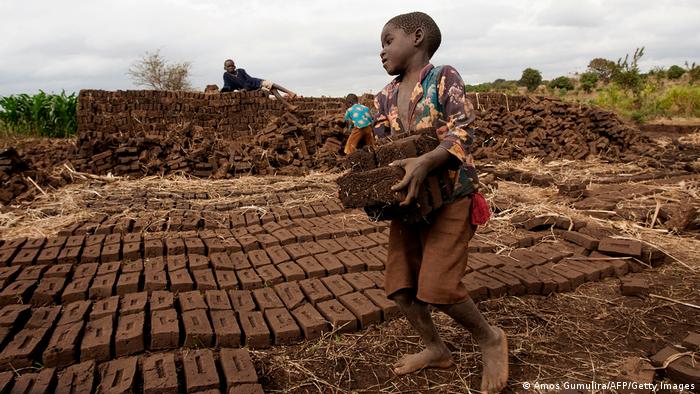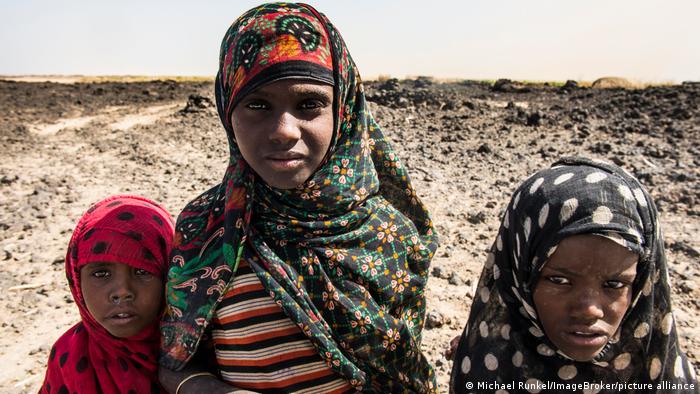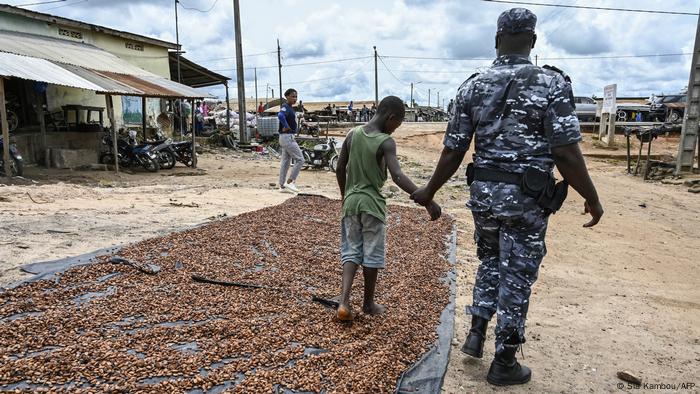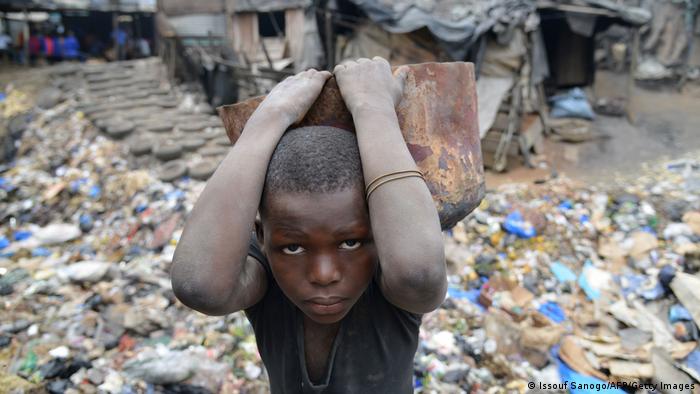A consequence of Corona and poverty: Child labor is increasing. Starting this Sunday, countermeasures will be discussed at a conference in Durban. Because in many African countries girls and boys are forced to work.

Boys making bricks in Malawi (2019)
The streets of Cameroon's capital, Yaoundé, are populated with young vendors. It's children between the ages of seven and fourteen who can be found at major intersections and in markets – often late into the night. Kevin and Léa are also there. They have school holidays but no free time: “I sell water to help my parents pay for my exercise books for the new school year,” says Kevin. The boy is eight years old. Ten-year-old Léa sells peanuts, she too wants to finance her exercise books this way.
It's scenes like this that worry Chantal Zanga. In a DW interview, the headmistress spoke out clearly against child labor. “Children have a right to protection,” she says. “If we send them onto the street, who will protect them?”
Negative turnaround also due to Corona
Most of the 160 million working children worldwide live in African countries: The International Labor Organization (ILO) assumes that more than 72 million children in sub-Saharan Africa are affected by child labour, i.e. almost every fifth child. Experts estimate that millions more children are at risk as a result of the corona pandemic.

Young nomads working in the salt desert of the Afar region in Ethiopia (2017)
According to the United Nations Children's Fund, UNICEF, progress to end child labor around the world has stalled for the first time in 20 years. Population growth, recurring crises, extreme poverty and inadequate social protection measures have forced an additional 17 million girls and boys into child labor in sub-Saharan Africa in the past four years.
Daily threats to health and life
The young street vendors are exposed to the weather, traffic and sometimes sexual violence on a daily basis. Twelve-year-old Juliette Lemana can also sing a song about the dangers in the metropolis of Yaoundé.
At her mother's behest, she says she sells safou fruit and roasted plantains, which are popular in the region. Sometimes at the market, sometimes the children would offer their goods for sale directly on the street to passing cars. “But recently a motorcycle ran over my classmate,” reports the girl. But it's not just the risk of accidents that worries her, but also the long working hours: “Sometimes we come home at night and can't find our way.”

Freed child soldier in South Sudan (2018)
According to the Cameroonian activist Pauline Biyong, child labor is forbidden by law: “Cameroon has ratified many laws to protect children. This phenomenon should therefore be marginal, but unfortunately we see in our cities day after day that children are used by their parents as labourers It's not normal,” said the chairwoman of the League for the Education of Women and Children (LEFE) in a DW interview.
Tough choice: Help for the family or invest in the future
Poverty remains one of the main causes of child labour. In order to ensure their own survival and that of their families, children toil in the gold mines of Tanzania and the Democratic Republic of the Congo. They endanger their lives as child soldiers, for example in South Sudan. They also work in agriculture – and often accept the low wages dictated by the world market.
This is the case with cocoa cultivation in the Ivory Coast. There, the Swiss company Nestlé is trying to polish up its bad image in cocoa cultivation – among other things with the construction of classrooms for children in the cultivation areas and literacy campaigns for market women. But children are still working on some cocoa plantations, Toussaint Luc N'Guessan, program manager at Nestlé, admits in an interview with DW: “The problem of child labor is real.”

Police action against child labor in cocoa production in Ivory Coast (2021)
Child labor is also a massive problem in Nigeria: According to the ILO, 43 percent of five to eleven-year-olds in Africa's strongest economy have a job – even though international conventions prohibit it: “My father brought me here so that I could learn tailoring,” says a boy in Maiduguri, northeast Nigeria. On some days he earns 150 naira – that's less than 40 euro cents. Adamu Umar, a father of 15 children, told DW he lets his children work as street vendors to supplement the family income.
But the sacrifice they make for their families is ultimately dear to the children stand, warn aid organizations. Because without school education, the chances of social advancement and a better life also diminish.
Wish and reality
As part of the United Nations Sustainable Development Goals, all 193 member states have committed to taking effective action to eliminate forced labour, modern slavery, human trafficking and the worst forms of child labor by 2030 – including the recruitment of child soldiers. But controls to stop the employment of minors are rare, criticizes the children's charity Plan International.

Waste collectors in Abidjan, Ivory Coast (2015)
Where the need is great, there is often no help insight. “The children have to learn to contribute to the income themselves, that's not a bad thing,” says Gisèle in Jaunde, who is stewing in the Ekounou Safous market. “During the holidays they have nothing to do and it is normal that they help us prepare for the start of school by at least buying the booklets.” And adds laconically: “Cameroon is tough.”
Activist Lucy Yunana in Maiduguri doesn't let arguments like these get through. She demands that the government must impose strict penalties for non-compliance in order to persuade parents to see things. Because, according to Yunana: “It is our responsibility as parents that we take care of our children and not our children for us.”
Watch video 02:33
Child labor instead of school in the Lagos slum
Collaborators: Elisabeth Asen (Cameroon), Julien Adayé (Ivory Coast), Al-Amin Gombe (Nigeria)